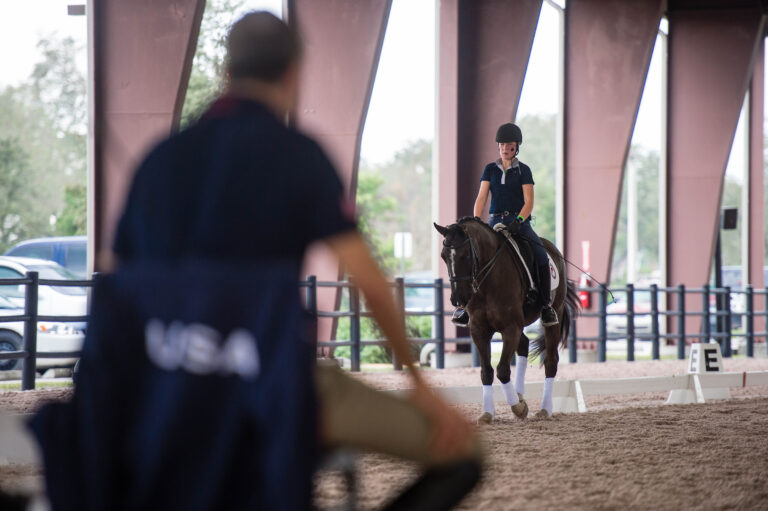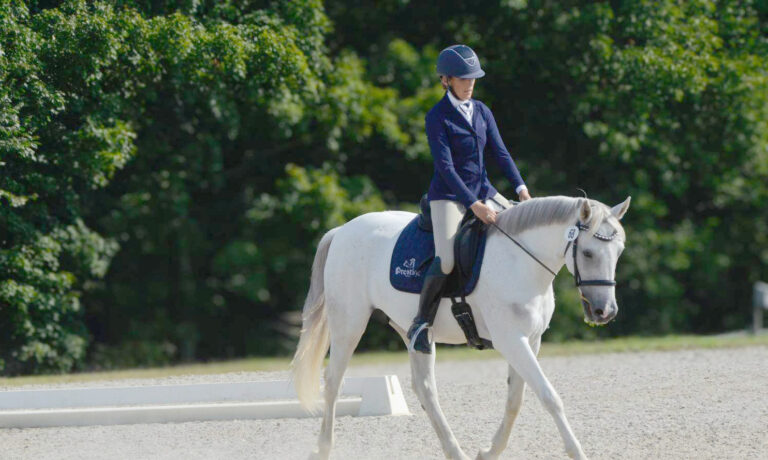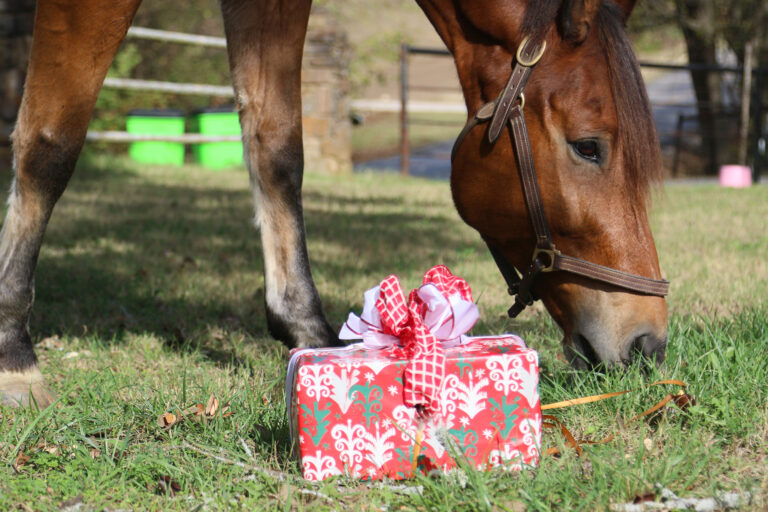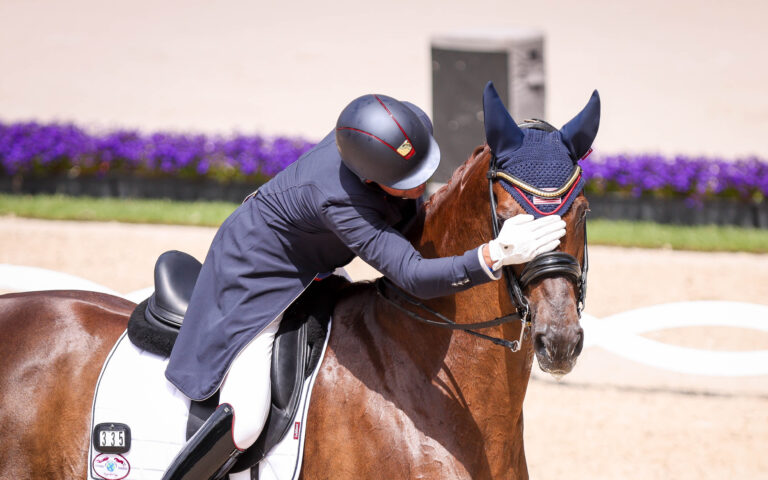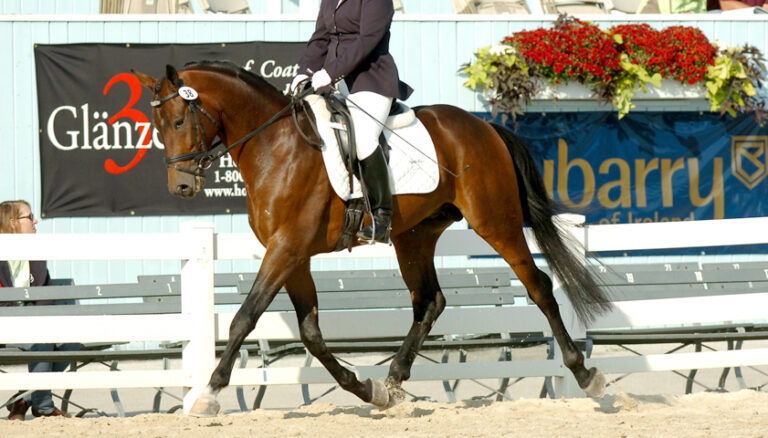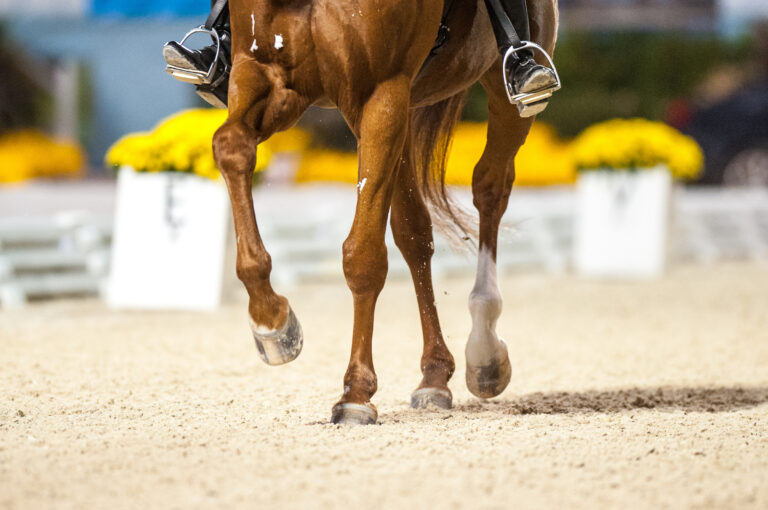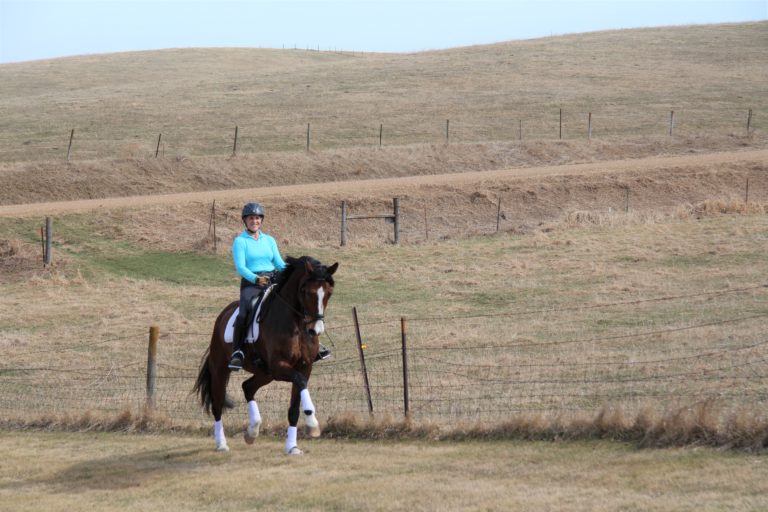People who ride automatically have an advantage as a handler at breed shows because they have a sense of the reactions of the horse to the aids. Many think a handler just go-go-goes, flying around the triangle at top speed. This is not so. Showing a horse in-hand is not about the running; it’s about the feeling you have in your hand—feeling the energy in the horse. It’s simple but also something hard to teach someone who doesn’t have the ability for it.

Although a top handler does need the ability to run, just as important is the handler’s ability to teach the horse to stay beside him without being controlled. I begin by introducing a horse to his handler. You want the two to bond so that the horse likes that person and wants to stay with him.
Walking the horse has a different energy from trotting. The horse needs to learn to relax at the walk because you’re just out for a stroll—it’s not a performance.
Using his voice and a halter, the handler gently teaches the horse to run beside him in his own space. If the handler slows down, the horse should slow down, too. If he speeds up, the horse should speed up.
For the trot, the energy needs to be higher. It doesn’t take long to develop—two or three sessions. It’s not necessary to train for a half hour, running with the horse, because his attitude will get flat. After the horse understands when the handler wants him to walk, trot and stand still, the handler can add energy to the presentation. A good handler needs to keep the energy level high, sometimes using an assistant with a line or whip who follows behind just close enough to get the horse’s attention but not so close that he upsets the horse, making him a little bit excited. After a while, the horse learns to perform in the same way just for the handler.
When it’s performance time, the handler wants to keep his horse on edge. Horses really learn what is wanted at a show. You want them to have an expression of energy and lightness that is appealing to watch. When walking into the arena, when standing, when trotting, you want the horse to look alive and alert—beautiful, not sleepy. The handlers’ aids should be subtle and hardly noticeable.
The U.S. Dressage Federation holds handler clinics from time to time, and they are well worth attending if you plan to show your young horse in-hand.
This article is from the Dressage Today archives.
To learn more about Scott Hassler, visit HasslerDressage.com.


